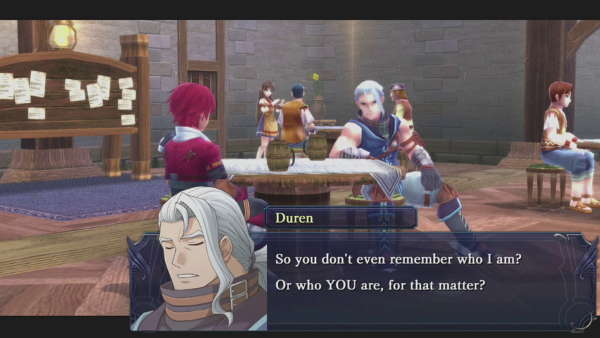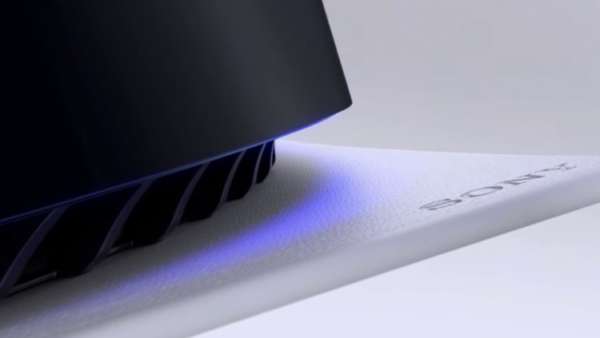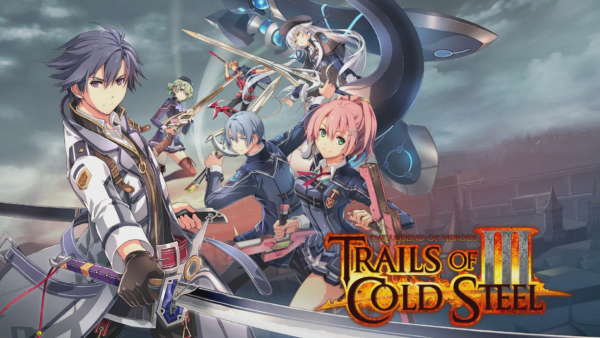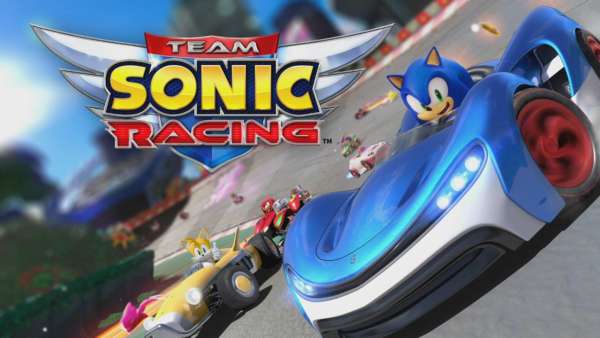Resogun was revealed as one of the first PS4 games, and wowed audiences with its voxel-based graphics style. Housemarque have definitely created an early system showcase for the PS4, but they have also created a fun and interesting shooter too.
Resogun features the same sort of mechanics you would expect in a retro-inspired side-scrolling shooter like this. Tons of enemies will all be firing bullets at once and you’ll be chasing that high score multiplier while you dodge on a 2D plane to preserve your fragile little ship. Before long you’ll get the hang of things and be weaving like a pro, which is great as you need to do more than just move and shoot.
Resogun’s hook is that you’ll be trying to save the last humans, as the voice in your Dualshock controller will handily point out at the start of every level. Every level has a certain number of humans to save, and you’ll be on the lookout for special waves of enemies that will free the little green men from their cages. Once destroyed you physically have to grab the human and carry them to an exit. Because all stages in Resogun loop back on themselves, you can explore the stage in a non-linear fashion, meaning you always have freedom of movement, and plenty of room to use the extremely well-implemented dash manoeuvre.
Resogun also features a set of traditional 2D space-shooter mechanics, such as a lives system, a bomb that destroys everything on screen, and an Overdrive system that powers up your craft and puts everything into to super slow-mo once a gauge is filled. It’s clear that Housemarque wanted to convey an old-school feel, inspired by the likes of R-Type and Radiant Silvergun, and the way the game moves and plays definitely helps to achieve that.
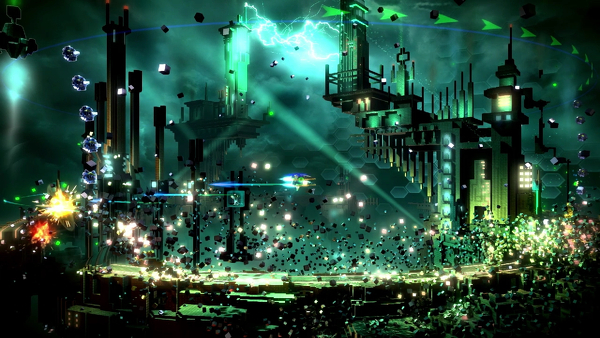
Resogun’s style and technology make for a very good-looking game indeed.
Much has been said about Resogun’s graphics, but it really is a sight to behold. Everything in the game’s five stages is made up of hundreds and thousands of cubes, which will break apart and scatter realistically, and even remain on screen if they landed on solid ground. Before long, most stages have disintegrated due to the sheer amount of carnage going on during the un-breaking 60fps ride (and if you haven’t destroyed most of the buildings by the end of the stage, whatever’s left is dissolved for you anyway, brick by brick, in a stunning end-of-level cut scene).
Resogun’s art style benefits from the technological aspects of its engine. All stages are set in a bleak futuristic techno-hell reminiscent of the setting of the Matrix movies, with blue tones and neon-drenched ruins providing the backdrop. Also of note is the electronic soundtrack, which meshes well with the all of the game’s aesthetics and is of such a high quality it’ll likely be stuck in your head even when you’re away from the game.
Controls are simple: Left stick to move and right stick to shoot. While a lack of a fire button may seem counter intuitive, it works because holding an analogue stick in a desired direction is far less stressful on the thumbs than holding a button. Crucially, you can only fire on the horizontal plane, making the game more about your movement skills, which is a positive as it retains the old-school 2d feel.
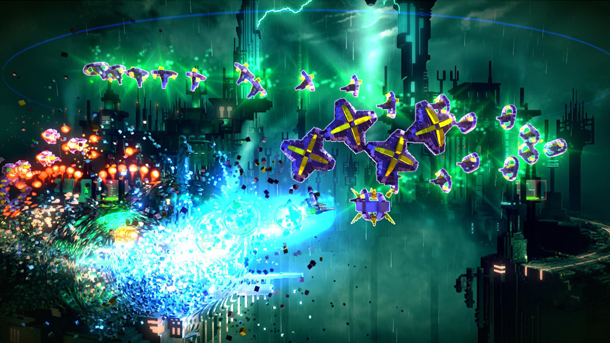
Up the difficulty, up the chaos. Multipliers are increased on higher difficulties, meaning only the highest scores can be reached there.
For all of its positive aspects, Resogun still has one or two drawbacks. The first is that the game is incredibly small; only 5 stages and 3 ships to choose from in the whole game. Replayability comes from embarking on the higher difficulties (which really are hard, something that hardcore gamers will be pleased to know) and by competing for insane high scores on the thriving leaderboard and its community. However if you’re only interested in completing every stage once and then leaving it alone, you may feel a little disillusioned with Resogun depending on how much you paid for it.
Resogun also feels lacking in one of the genre’s most important aspects: crazy boss fights. Because every stage is round, the bosses seem to consist mainly of a giant wheel or sphere, tasking you to shoot different parts of it while carefully moving around its spokes. This works well in the first stage, but when another wheel-shaped boss shows up in the next stage, it is disappointing. The lack of true variation in the bosses definitely feels like a missed opportunity.
Resogun admirably carries on the spirit of the genre, and with its eye firmly on challenge, Housemarque have created a dazzling display of true gameplay which fans of side-scrolling shooters should absolutely pick up. If you only having a passing interest, then the initial effect of the frankly stunning visuals will wear off and the relative lack of content might not keep you coming back so much.

